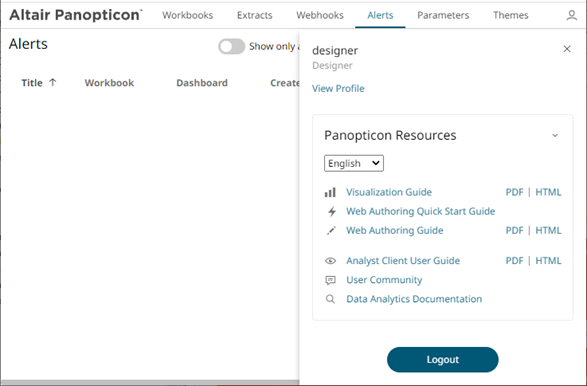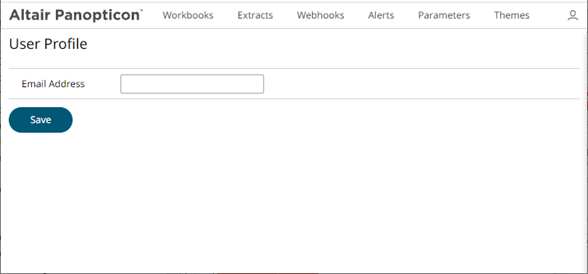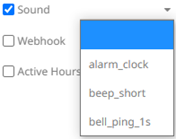Setting Up Alerts on the Web Client
Alerts can be defined against:
q Streaming data sources (including CEP Engines and message queues)
q Periodically refreshed data sources (like Oracle, SAP Sybase, SQL Server, and so on)
Alert definition can be done by right-clicking on a streaming numeric data in a visualization in the Web client and setting the limits, duration, what will be included, how many and when an email will be sent.
|
NOTE |
Before setting up the visualization alert, enter the email of the user or group who will receive the alert on the User Profile: Steps: 1. On the
Workbooks and Folders Summary page, click
The Profile pane displays with the name of the user and the role.
2. Click View Profile. The User Profile page displays.
3. Enter the Email Address. 4. Click
|
Steps:
1. Open a workbook on the Workbook and Folders Summary page and right-click on a streaming numeric data in a visualization. Select New Alert on the context menu.
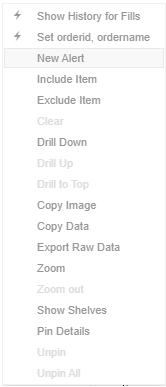
The Alerts dialog displays with the name of the visualization where the alert will be set.
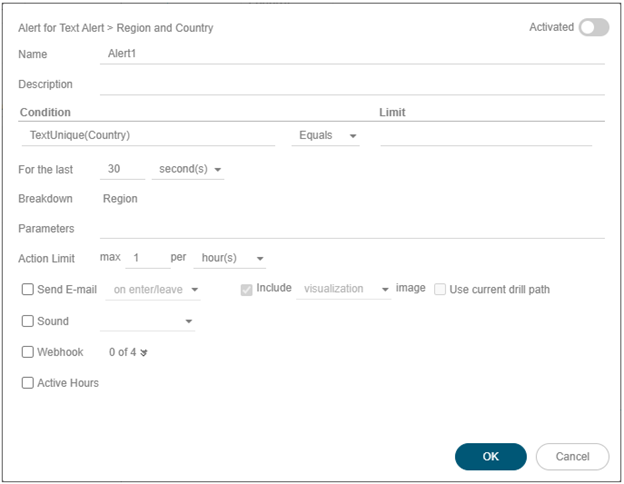
Sample Text Alerting
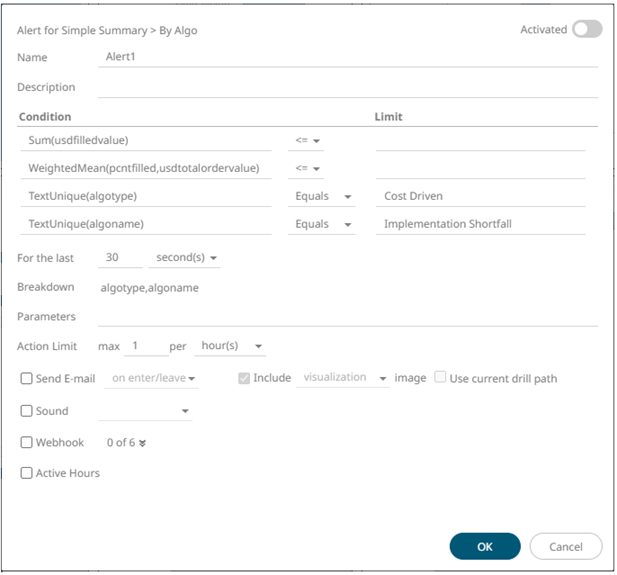
Sample Numeric Alerting
2. Enter or select the following properties:
|
Setting |
Description |
|
Name |
Name of the alert. |
|
Description |
Description of the alert. |
|
Condition |
Allows setting the Upper (<= or Lower (>=) Limit of all the available numeric and text variables in the visualization. For text variables, there are three types of conditions: · Equals - The string is equal to another string, e.g., Country=Sweden · Wildcard: The string matches a wildcard expression, e.g., Country=Norwa* would match Country=Norway · Regex: The string matches a regex expression, e.g., Country=I[a-zA-Z]+a would match Country=India and Country=Indonesia
|
|
For the Last |
Checks if a value has reached the limit on the set Date/Time unit: · second(s) · minute(s) · hour(s) · day(s) |
|
Breakdown |
Current breakdown of the visualization. |
|
Parameters |
Available parameters in the visualization. |
|
Action Limit |
The maximum number of times an alert will be sent on the set Date/Time unit: · second(s) · minute(s) · hour(s) · day(s) |
|
Send E-mail |
Determines when an alert email will be sent: · on enter · on leave · on enter/leave If unchecked, the notification will only be displayed on the Web client. |
|
Include |
Determines whether the image of the visualization or dashboard will be included in the alert email. For the included image of the visualization, check the Use current drill path box to generate a drilled image in the email. |
|
Sound |
The sound that will be played for a triggered alert. The available sounds are mp3 files placed in the AppData/Sounds folder (i.e., C:\vizserverdata\Sounds). Panopticon is shipped with one sound (i.e., bell_ping_1s.mps).
Default is None. |
|
Webhooks that will executed when the alert is triggered. |
|
|
Active Hours |
Determines when an alert should be active. Proceed to step 3. |
3. Check the Active Hours box. The dialog changes to display:
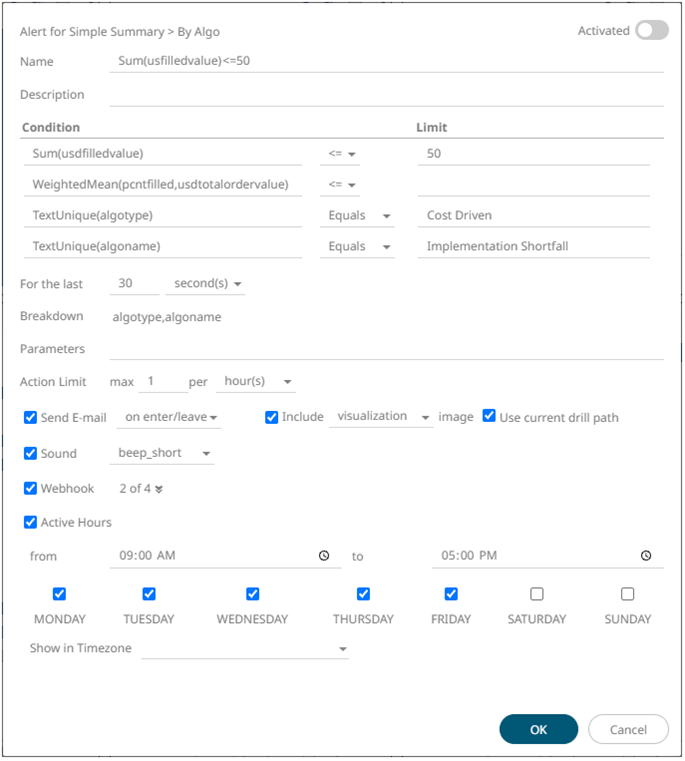
By default, the duration is from 9:00 AM to 5:00 AM on Monday, Tuesday, Wednesday, Thursday, and Friday.
4. To modify the Active Hours, click
 .
.
The Clock settings display.

5. Select the Hour, Minutes, and AM/PM settings.
6. To modify the Active Days, check the boxes of the desired days.
7. To apply the active hours in another time zone, select the desired value from the Show in Timezone drop-down list box.
Once set, the From and To limits will be applied for that time zone. If not set, the server default time zone will be used.
8. Tap the Activated slider to turn it on.
9. Click  . The new alert is added on the Alerts
page.
. The new alert is added on the Alerts
page.

An alert displays with the following properties or settings:
|
Property |
Description |
|
Title |
Name of the alert that was entered in the Alerts dialog. |
|
Workbook |
The path and name of the workbook where the alert was set. |
|
Dashboard |
The dashboard name where the alert was set. |
|
Created By |
The author of the alert. |
|
Creation Time |
The Date/Time when the alert was set. |
|
Enabled |
Determines if the alert is enabled (or active). |
|
Status |
Status of the alert. |
|
Times Triggered |
The number of times the alert was triggered. |
|
Sent Emails |
The number of emails sent. |
|
Notifications |
The number of notifications sent. |
|
Triggered Webhooks |
The number of triggered webhooks. |
|
NOTE |
When creating alerts for grand total, ensure that no breakdown is set.
|
You can then opt to perform any of the following operations:





